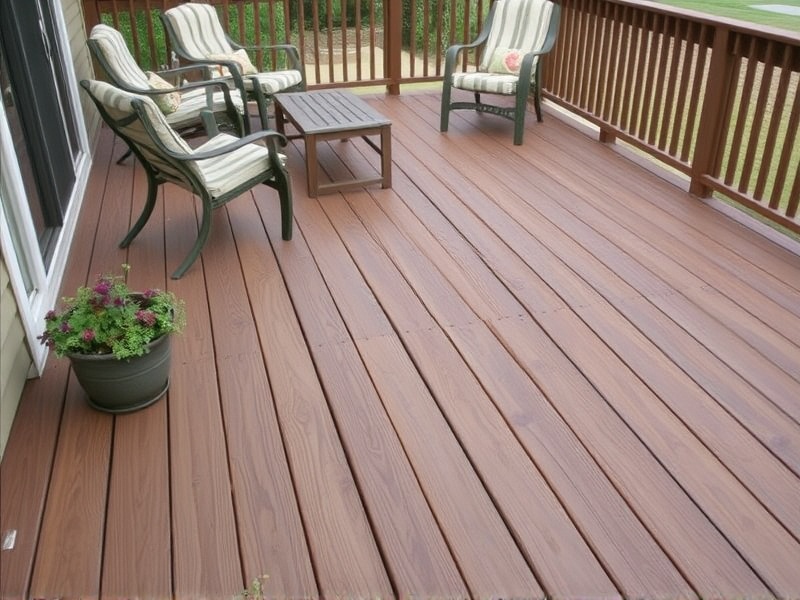Our Location
304 North Cardinal St.
Dorchester Center, MA 02124

Deck flooring is a crucial element in enhancing the aesthetic appeal and functionality of your outdoor living space. However, not everyone can afford high-end materials like composite or exotic hardwoods. Fortunately, there are several affordable options that offer great value for money. This article will explore five different types of cheap deck flooring options, including their pros and cons, installation processes, cost comparisons, and maintenance tips.
Pros: Pressure-treated wood is one of the most affordable options available. It is widely available and relatively easy to install. It also offers good durability and resistance to rot and insects when treated properly.
Cons: Over time, pressure-treated wood can warp, twist, or split. It also requires regular staining or painting to maintain its appearance.
Installation Process: Installation typically involves cutting the wood to size and attaching it to the deck frame using screws or nails. Pre-drilling holes can help prevent splitting.
Cost Comparison: Pressure-treated wood costs around $2 to $4 per square foot, making it one of the cheapest options available.
Maintenance Tips: Regular sealing or staining every two years can extend its lifespan and improve its appearance. Always clean the surface before applying any sealant.
Pros: PVC decking is water-resistant, does not rot, and is highly resistant to mold and mildew. It is also lightweight and easy to install.
Cons: PVC can become brittle over time, especially in cold climates. It can also scratch easily and may fade if exposed to direct sunlight for extended periods.
Installation Process: Similar to pressure-treated wood, PVC decking can be installed by cutting it to size and attaching it with screws or nails. It’s important to use PVC-specific tools to avoid damaging the material.
Cost Comparison: PVC decking costs between $3 to $7 per square foot, which is slightly more expensive than pressure-treated wood but still considered affordable.
Maintenance Tips: Regular cleaning with a mild detergent solution can keep the deck looking new. Avoid abrasive cleaners that can scratch the surface.
Pros: Composite decking combines wood fibers and plastic to create a durable, low-maintenance product. It resists fading, warping, and insect damage.
Cons: Composite decking is generally more expensive than pressure-treated wood and PVC, though it remains cheaper than premium hardwoods. It can also be prone to scratches and dents.
Installation Process: The process is similar to that of pressure-treated wood and PVC, but it requires careful alignment to ensure a smooth finish.
Cost Comparison: Composite decking ranges from $3 to $8 per square foot, depending on the brand and quality.
Maintenance Tips: Cleaning with a mild detergent and rinsing thoroughly can help maintain its appearance. Avoid leaving heavy objects on the deck to prevent dents.
Pros: Made from recycled plastic bottles and other materials, this type of decking is eco-friendly and helps reduce waste. It is also very durable and requires minimal maintenance.
Cons: Recycled plastic decking can be more expensive than some other options. It may also have a more limited color range.
Installation Process: Installation methods are similar to those used for other types of decking materials. However, it’s recommended to use recycled plastic-specific tools to ensure proper fit.
Cost Comparison: Recycled plastic decking costs approximately $3 to $7 per square foot.
Maintenance Tips: Regular cleaning with a soft brush and water is sufficient. Avoid harsh chemicals that can damage the surface.
Pros: Treated bamboo is a sustainable option that offers excellent strength and durability. It is naturally resistant to moisture and insects.
Cons: Like other wood-based products, untreated bamboo can degrade over time if not maintained properly. It can also be more expensive than some alternatives.
Installation Process: Bamboo planks should be installed following the manufacturer’s guidelines, ensuring proper spacing and alignment.
Cost Comparison: Treated bamboo costs roughly $3 to $6 per square foot, making it a middle-ground option in terms of cost.
Maintenance Tips: Regular sealing with a penetrating oil can protect the bamboo from moisture and UV damage. Avoid standing water on the deck.